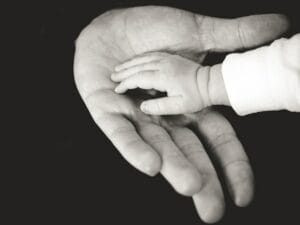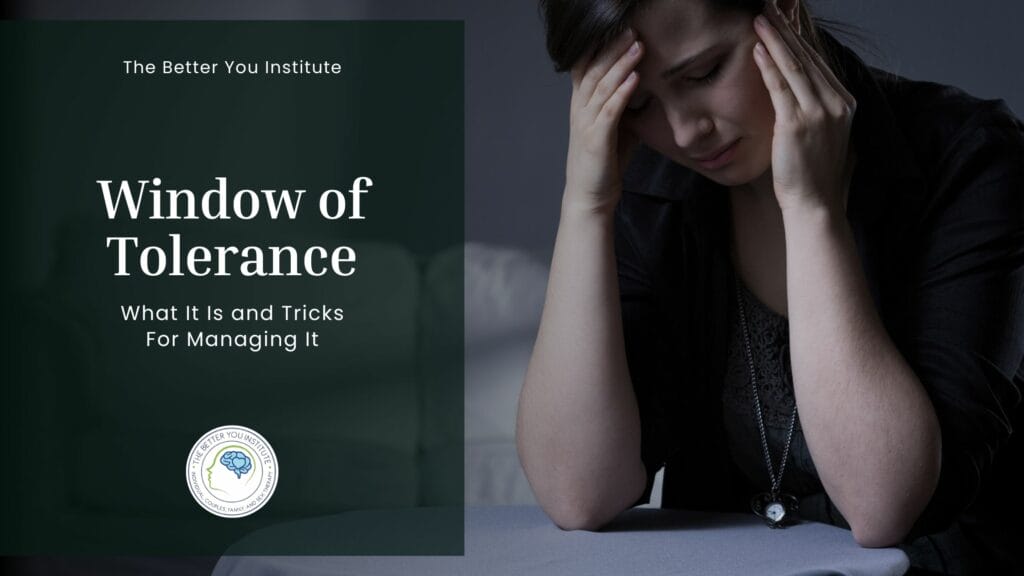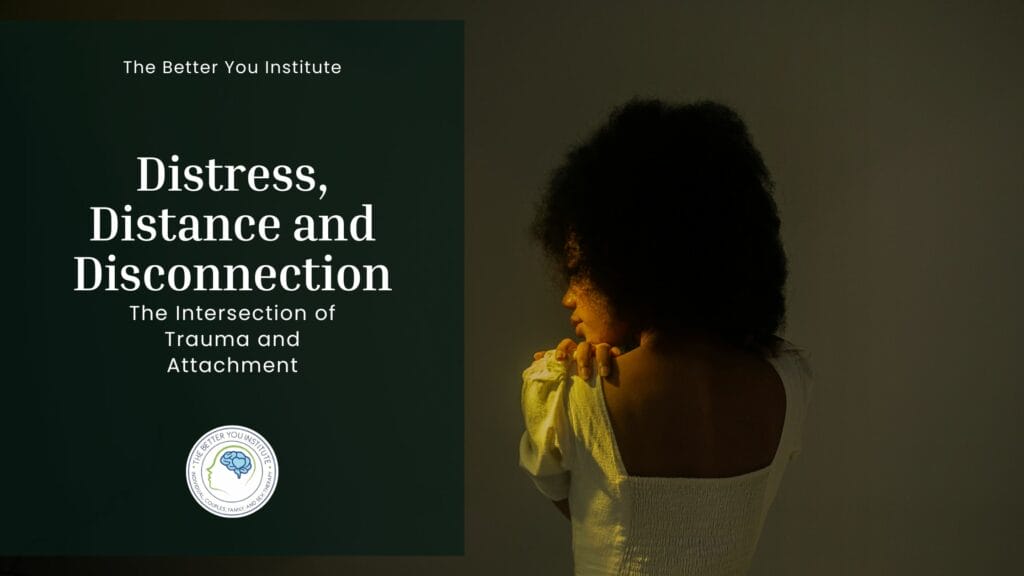Have you ever heard the phrase attachment style or wondered where the terms “clingy” or “avoidant” originate? Attachment refers to your connection with friends, family, or romantic partners. People with whom you’ve grown close. Your connection pattern is commonly simplified by “clinginess,” “avoidant,” or “confident” descriptions. In other words, you either gravitate intensely toward others, strongly prefer independence, or balance in the middle. Have you ever wondered if someone describes you as one of these and which one you are? If the answer is yes, continue to read to discover the four primary attachment types and how they influence a person.
Table of Contents
What is an Attachment Style?
Attachment styles came about when researchers John Bowlby and Mary Ainsworth began noticing the different types of connections people have with one another. Bowlby picked up on various dynamics between romantic partners, friends, and family members. He saw some individuals gravitate closer and struggle to take space from their loved ones, whereas others preferred more emotional distance. Observations went further when Mary Ainsworth conducted an experiment infamously known as “The Strange Situation.” In this study, caregivers left their infants in a controlled, “strange” environment to see how they responded. The differing reactions by each infant led researchers to conclude that babies develop different attachments to their caregivers based on various factors. Essentially, just because one baby is fine being left alone by their caregiver, it does not indicate that all babies are OK with this.
A parent may wonder- well, how do I know what my baby’s attachment style is? Or, how can I help my baby develop the best attachments? You can likely tell by their response when you drop them at daycare or walk into a separate room and notice their reaction. Do they cry at first but quickly move on to exploring their environment? Do they throw what seems like an endless tantrum for an extended time until you return? Or do they seem indifferent to your presence or absence? How do they react when you come back? Are they happy to see you, or remain upset with you? These are just a few questions that may hint at a child’s attachment style.
As a reader, you may be curious why I’m discussing infants as a psychotherapist who works with adults- this matters! As children, we develop attachment styles with our parents. This attachment subsequently forms the template for how we relate to others later in life, otherwise known as our internal working model. In this article, you’ll see the connection between your attachments as a child and their impact on adulthood.

Secure Attachment
Suppose you’ve met someone who seems confident, secure in who they are and balances their independence with seeking connection from others. In that case, there’s a chance they are a securely attached individual. A securely attached individual is capable of building long-lasting relationships with others. They’re capable of the following:
- Trusting others easily
- Being emotionally available
- Comfortably spend time alone
- Emotional regulation
- Have high self-esteem
- Comfortably seek connection with others
- Ability to set healthy boundaries
A secure connection starts in early childhood and results from consistently meeting a child’s needs. An example is when a baby lies in their crib in the morning, waiting for their caregiver to pick them up. Initially, the baby needs to be changed and fed before they play for the next few hours. Consistently, these needs are met every morning by one or more caregivers in the baby’s support system. The baby has learned to expect this chain of events each morning. The baby does not question whether the caregiver will tend to their needs each morning. Because of the consistency of their caregiver(s), the baby develops a sense of security that the caregiver will meet their needs as they arise.
Another example of how secure attachment develops is when a child cries in response to being upset, scared, or confused. The caregiver acknowledges the child’s emotions with care and concern. A process known as attunement is created by explaining their feelings, so the child understands the experience. Attunement allows the child to understand their caregiver empathizes with them, is supportive, and is there to aid in emotional regulation. The child, again, develops security that the caregiver will meet their emotional needs. Subsequently, attunement from the caregiver helps the child to regulate their emotions and gain a sense of self down the line.
Securely attached individuals, in childhood, could seek reassurance and comfort without punishment, shame, or guilt. There was a sense of emotional and physical safety with their caregiver. Their caregiver was consistent in how they showed up for the child. Moreover, the caregiver recognized when the child needed extra support or space for independence. The child later models this safety and comfort and adopts it as their attachment style.
Anxious Attachment
An anxiously attached individual is likely the “clingy” or highly sensitive type of person who comes to your mind. Anxiously attached individuals have a slightly more difficult time in relationships due to their fear of abandonment and frequent need for reassurance. An anxious attachment typically looks like this:
 People pleasing
People pleasing- Fear of rejection
- Trouble being apart from others
- Fear of abandonment
- Sensitive to criticism
- Intense emotions like fear or unworthiness
- Frequent desire for validation
- Inability to emotionally regulate without the help of someone else
- Second-guessing most tasks
- Passive
- Saying yes when they want to say no
- Fluid boundaries
Anxious attachment stems from a caregiver inconsistently meeting a child’s needs. One day the caregiver is emotionally attuned with and meeting the child’s physical needs; the next day, the child is left to soothe on their own or get their needs met differently. Using our previous example, when a caregiver meets an upset or scared child with concern and empathy, the child sees their caregiver as a source of comfort. However, the next time they cry, the caregiver ignores or puts the child in their room without explaining their emotions or how to soothe them. The child learns that sometimes their caregiver will be comforting and present, and other times the caregiver may be emotionally unavailable. The inconsistent responses cause the child to feel uncertain of which version they will receive from the caregiver. The child desires the comforting version of their caregiver but is unsure how to get it.
Inconsistency can stem from caregivers who are easily overwhelmed by their environment or when other factors hinder the caregiver’s ability to remain present with a child consistently. For example, abusive partners who take a toll on the caregiver’s well-being or having many young children to care for without proper support may lead to this. Additionally, unpredictable caregivers may struggle to understand their own emotions, which can result from how they grew up. In other words, they may have missed out on learning emotional regulation from their caregivers and need more skills to teach their children how to regulate. If caregivers are unsure how to regulate, they may become emotionally detached to self-soothe.
The general theme of unpredictability in a caregiver causes the child to lose confidence that their needs will be met. As a result, individuals with anxious attachment can seem to “hoard” love, affection, and caring because they’re uncertain when they receive it next.
Avoidant Attachment
An avoidant attachment characterizes the “emotionally unavailable” person in your life. They struggle to have deep connections and thrive in superficial conversations. Avoidantly attached individuals need to work harder to build deep relationships due to their fear of intimacy and vulnerability. An avoidant attachment looks like this:
- Hyper-independence
- Expect others to care for themselves primarily
- Feel suffocated when others depend on them for connection
- Pull away when others become vulnerable
- Struggle to trust others
- Have difficulty committing to relationships
- Rigid boundaries
- Standoffish, cold, may feel aggressive
The avoidant attachment style stems from caregivers who were consistently unavailable to their children. The caregivers may have expected children to meet their own needs from a young age. Furthermore, the caregiver may reprimand the child when they seek comfort from the caregiver. An example is when a caregiver expects the oldest child to make their meals and walk to school at a young age; we’ll say 5 or 6 years old. The child needs their caregiver to ensure they are fed and get to school safely, but the caregiver has determined it is the child’s responsibility. When the child reacts emotionally to this, the parent sends the child into timeout without an explanation. The child gets through emotions of rejection and disappointment on their own. Through this emotional regulation process, the child begins to understand they are on their own for emotional and physical survival.
Subsequently, the child learns to suppress their desire for connection from their caregiver and eventually expects all individuals to fend for themselves. Avoidant children also do not learn how to receive such caretaking. Later in life, the avoidant child may become overwhelmed when partners or friends expect or give support, physically or emotionally. Some characteristics of caregivers to avoidantly attached children are those who work two jobs and have a social life that does not include their kids. Since these tasks require much of the caregiver’s time and attention, there is little left to meet their child’s needs.
On the other hand, caregivers of avoidantly attached children may struggle to understand their child’s needs or emotions. Additionally, the caregiver may struggle to commit to raising a child or become easily overwhelmed and consistently check out emotionally. Additionally, the caregiver may have an avoidant attachment style.
Disorganized Attachment
Individuals with disorganized attachment are highly reactive to any emotional connection. A disorganized attachment causes inconsistent behavior that can be difficult to predict, and both intensely fear and seek connection.
A disorganized attachment looks like:
- Inability to regulate emotions
- Difficulty trusting others
- Intense emotions and reactions
- Waver between clinginess and dismissive behavior
- Passive-aggressive
A disorganized attachment style is thought to stem from traumatic experiences, neglect, or abuse in childhood. An example is when a caregiver is physically abusive to the child when they seek comfort, or the child witnesses the caregiver abuse someone else; this is common in the case of domestic violence. The abuse creates a sense of fear, which is confusing for the child because, subconsciously, the child understands that same caregiver as someone who provides care and love. A second example is when children show distress when left with a babysitter and seek comfort from their caregiver later. Instead of being soothed for their emotions, the caregiver yells or attempts to intimidate the child into behaving. The child becomes uncertain about whether the caregiver will meet their needs, and they are scared of that same person. Children of caregivers who provide a sense of safety and fear develop similar, confusing patterns of connection later.
Caregivers of children who have a disorganized attachment may have grown up in similarly traumatic or abusive households. As a result, the caregiver has modeled patterns after their caregivers and may understand these patterns as a discipline. On the other hand, caregivers of disorganized children may be unable to regulate emotionally and, instead, process their intense emotions outwards toward others.
*As a disclaimer, everyone is unique. Each individual may respond to their caregiver’s parenting styles differently. For example, a parent could be equally absent in two of their children’s lives, but one child develops anxious attachment and the other avoidant attachment styles. Some of how we create connections are innate to us. If our caretakers are in tune with our instincts for connection or independence, we can better develop a secure attachment. However, caretakers are human and only have so much bandwidth when keying into others’ needs and their own.
What to do with this insight?
How it hurts vs. how it helps
Think of your attachment style as your template for emotional connection. Your style determines how you approach your present environment because it is an adaptation of your initial environment. Therefore, it is vital to honor why and how your attachment style developed the way it did. In addition, exploring ways that your attachment style may be an obstacle can be helpful. The purpose of this is to highlight traits from your attachment style you may wish to work on to feel a more secure attachment.
Anxious
For the anxiously attached, being close to people serves as comfort. It ensures you’ll get the necessary love and intimacy every human needs. Clinging to others feels like a reliable and fool-proof plan that those individuals will meet your needs. The closer you are to your support system, the more certainty you have to be cared for and loved.
In contrast, this way of relating to others may feel like you have little control over your emotional well-being as if other people have the remote to your feelings. Unfortunately, you may not feel fulfilled in your relationships without exploring and processing your anxious attachment, even with loving and caring people. You may always seek more, leaving your loved ones feeling like they’re not good enough. You feel entirely reliant on others to determine how you feel about yourself. This dependence creates an unstable sense of self when your support system may not be consistent or reliable—subsequently, your sense of self-worth wavers with how others interact with you.
Avoidant
If you are avoidantly attached, you protect yourself with a barrier. The space between you and others is a form of safety. You think, consciously or unconsciously, “If I don’t seek support, I can’t be disappointed when they let me down.” You coped with the disappointment of not having needs met by relying on yourself or turning your needs off entirely.
Next, we consider how avoidant attachment may hinder you. The difficulty of being vulnerable with others makes relationships and conversations superficial. Without intimacy, you may feel isolated or lonely even when surrounded by many people. Additionally, you may need help to create a deep connection despite wanting it badly. Learning to support others and tolerate their vulnerability is another aspect that may feel foreign for avoidantly attached people.
Disorganized
Lastly, for those with a disorganized attachment, the rollercoaster of behaviors is how you match your environment. Your unpredictable behavior helps to normalize feeling uncertain about whether you’ll be loved or hurt by others. Therefore, those feelings are less confusing and more tolerable. On the other hand, a disorganized attachment hinders people in many ways. Disorganized attachment can feel like a rollercoaster of emotions. The back and forth of affection and distrust can feel unsustainable for lasting relationships, both platonic and romantic. Because there is such an intense fear of letting others in, but you so deeply desire it, it can sometimes feel impossible to meet your needs.
Secure
Securely attached people have a type of attachment that provides the optimal path to connection. You can be close to others while feeling a solid sense of independence. Your comfort with connection/intimacy and alone time lend to your overall well-being in that you can find fulfillment in various forms.
Coping mechanisms are our natural way of “surviving” adversity, discomfort, trauma, or negative emotions. The coping mechanisms we develop are typically the quickest way we learn to get through situations when we are kids. As we mature, we begin to outgrow these coping mechanisms to the point where they go from adaptive to maladaptive. Indeed, these coping mechanisms no longer serve us. For example, avoiding deep relationships was easier when you partied in college or had distractions, but now that you seek a companion, avoiding intimacy gets you further from that goal. A change in desires does not mean changing behaviors will be easy, but it may serve as good motivation to do the work. At this point, it’s time to replace those coping mechanisms with something more suited for your life currently that aligns with a secure attachment style.
Coping strategies for insecure attachment
Therapy:
The purpose of therapy is to help gain insight into your past and understand your attachment styles. Through this, a professional can help identify patterns that are now maladaptive and specify coping skills that help or hinder you in your personal life. With the help of a therapist, you can identify behaviors or patterns you want to let go of or adapt to serve the adult version of you who has the potential to get their needs met.
Connect with someone securely attached:
As we discussed, insecure attachment styles (anxious, avoidant, and disorganized) stem from inconsistency in meeting needs. If you have an insecure attachment, you likely associate an emotional connection with uncertainty, rejection, or confusion. Identifying and connecting with a securely attached individual may help break some of these associations. Securely attached individuals do not bombard you with affection or intimacy but instead consistently meet your needs. Consistency will be one of the most critical aspects of developing a more secure attachment because you won’t have to worry if or when your loved one will meet your needs or if they will hurt you. You learn to trust that “survival mode” isn’t necessary.
Reparenting yourself:
You cannot go back in time. However, you can examine your relationship with each of your caregivers and find critical moments that define your attachment style. Ask yourself, what did you need back then instead to create a securely attached child? Can you give that to yourself now as an adult? Ideally, you become self-sufficient in giving yourself the things you longed for as a child.
Repairing and healing:
It may feel nice to heal your wounds with a caretaker. An example of this might be the need for validation. Most of the time, parents do their best but may not have validated your feelings for various reasons. You can now validate yourself and your experience or have a conversation with your parents to see if they can meet you in that validation now.
By now, you should be able to identify what type of attachment style you have. This article is part of a series of articles discussing the different attachment styles in varying settings: career, relationships, and emotional regulation. Be sure to check back for those articles. If you want help overcoming your insecure attachment and achieving secure attachment, our therapists can help. Don’t hesitate to contact our intake line at 267-495-4951 or email us at [email protected].
Meet The Author:

Brianna Intili
Professional Counselor
Brianna Intili, MA, NCC, is a Professional Counselor and Director of Professional Development specializing in mindfulness-based approaches to help clients find peace in adversity. Focused on empathetic, judgment-free counseling, she empowers individuals to overcome challenges like mood disorders, low self-esteem, and life transitions. With a BS in Psychology from James Madison University and an MA in Clinical Mental Health Counseling from Marymount University, Brianna combines cognitive techniques and a holistic view for a fulfilling life.
Learn more about Brianna Intili ⇒


 People pleasing
People pleasing




